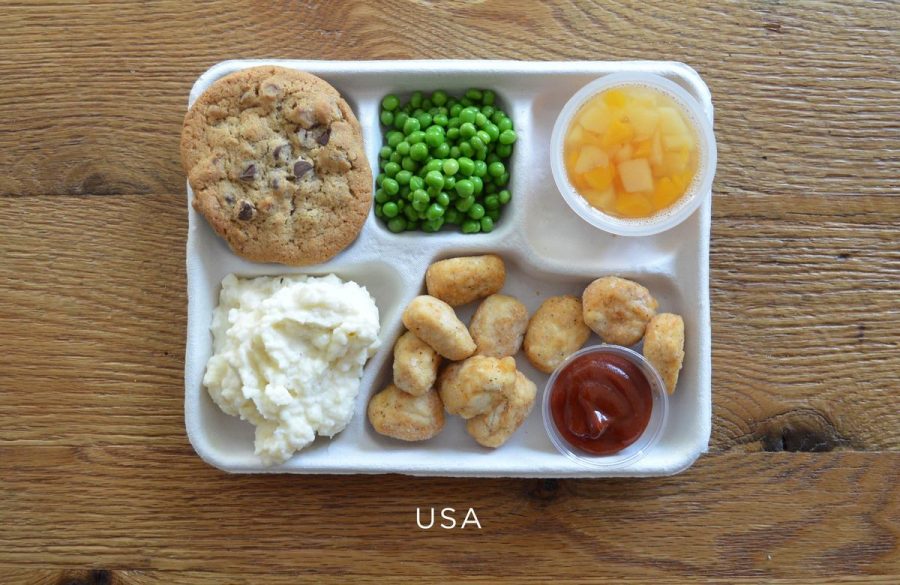The Truth About School Cafeteria Food
School lunches in the US are lacking the quality they once had, especially compared to other countries. But at what cost to students will it take to change our current lunch situation?
There is nothing quite like the smell and taste of school cafeteria food. Across America, over 30 million school lunches are served per day.
These numbers are diminishing though because of the Healthy, Hunger-Free Kids Act, which has enforced specific guidelines for a “healthier and more balanced” lunch.
The Act, implemented in 2010, was introduced to make schools follow new and improved food wellness policies that promote good nutrition and better eating habits. However, while having good intentions, the act hasn’t done much to serve students fresh food; rather, it has mandated that companies re-formulate already processed foods to make them “healthier.”
The gallery of pictures below compares a typical school lunch in nine different countries. The USA fails to compete with other countries’ school lunches, making it obvious it prefers to stick to what it the fast or processed food our country is known for.
In contrast, 4,760 miles away, France has the lowest child obesity rate in the Western world. A typical school lunch in France consists of cucumber salad with vinaigrette, salmon lasagna with spinach, fondue with baguette and fruit compote for dessert. By comparison, a typical school lunch in America is a processed Philly cheese steak sandwich with steamed green beans, canned peaches and a bag of apples. Unsurprisingly, American kids leave much of their food untouched; particularly neglected are the fruits and vegetables.
The School Nutrition Association said that 70 percent of school meal programs have taken a massive financial hit since the Healthy, Hunger-Free Kids Act took effect. The Act not only fails to meet healthier and better food, but it also fails to meet original profits.
So, how do we fix or at least improve this dilemma?
A school in Minneapolis is tossing out processed food in favor of meals made from scratch, which are prepared fully in on-site kitchens. This trend towards fresher and better food is evidence that federal legislation is working. The Department of Agriculture is urging Congress to reauthorize the act. However, farm-fresh food and scratch cooking cost more money that less affluent school districts don’t have.
The solution to this was to take advantage of the Community Eligibility Provision in the Healthy, Hunger-Free Kids Act, which allows high poverty districts to provide free meals to all students.
Lunch is a crucial part of the day, especially for children. Replacing processed foods with freshly cooked meals benefits both the students and the school. In the end, it all comes down to this: How far will students and parents go to change the current lunch situation?



Cool124 • Feb 8, 2022 at 5:09 pm
This is bad shape up governemt!
Amanda • Nov 20, 2021 at 10:51 am
So true. 🙁